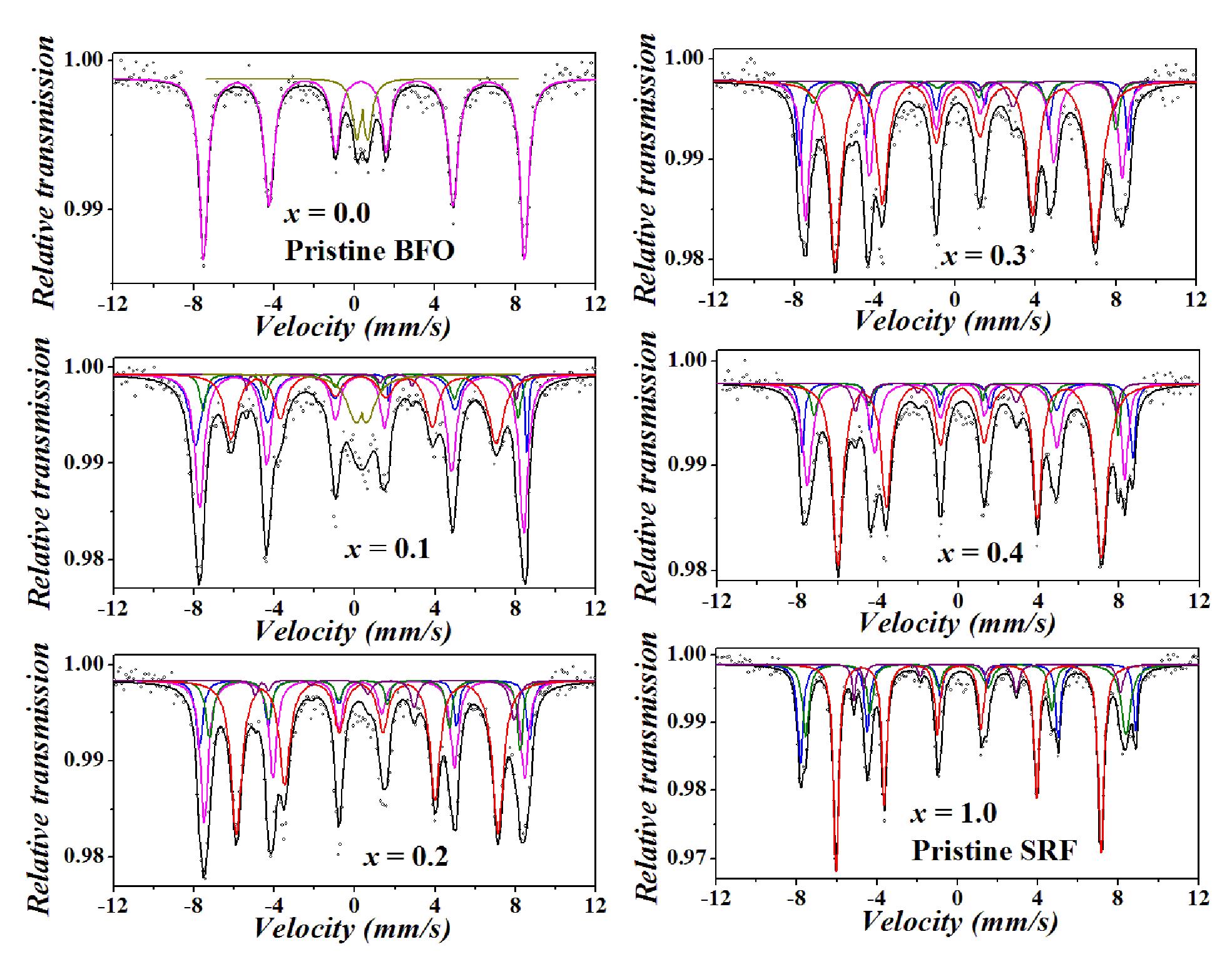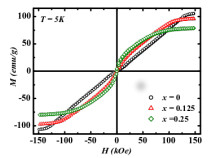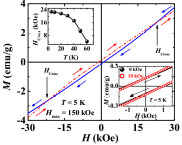Structural, dielectric, magnetic, hyperfine and magnetoelectric (ME) properties of a few multiferroic
based nanocomposites(NCs) and nanoparticles(NPs) have been investigated using state of the art
experimental techniques.
Multiferroic properties of BiFeO3 based NCs (with different ferrites) and NPs with
substitution at different cationic sites have been studied. BiFeO3 is a multiferroic with
ferroelectricity and antiferromagnetism at room temperature. Formation of NCs comprising
BiFeO3 and ferrimagnetic SrFei12O19 induces quite large magnetic moment
in antiferromagnetic BiFeO3 which enhances the overall magnetization and coercivity in NC
system. Besides that, the magnetocapacitance(MC) which is a very important parameter for the presence of
ME coupling in a material, is found to be increased with the increment of SrFe12O19
content in NCs. Similarly, NCs of BiFeO3 and CoFe2O4 also exhibit
enhanced dielectric constant, magnetization, coercivity and MC in comparison with the pristine
BiFeO3 and the enhancement is more with the increment of CoFe2O4
content. Besides nanocomposites, substitution of Tb3+ and Co3+ in Bi3+
and Fe3+ sites of BiFeO3 have been done to observe the effects in dielectric,
magnetic and ME properties of BiFeOi3. Dielectric constant and magnetization of
BiFeO3 are observed to be enhanced after doping. Also, MC is seen to be increased in the
doped sample.
In addition to BiFeO3, some doping effects on another multiferroic material TbMnO3,
have been studied. TbMnO3 is a multiferroic with ferroelectric and antiferromagnetic
transitions at very low temperatures(~ 27 and 42 K respectively). Co and Fe have been doped separately in
Mn3+ site of TbMnO3 and dielectric, conductivity, magnetic, hyperfine and
ME properties have been investigated. Both dielectric constant and conductivity have been increased after i
doping with Co and Fe. Furthermore, substitution of Fe and Co result systematic shifting of Tb and
Mn moment ordering temperatures and Co doping induces ferromagnetic interaction in antiferromagnetic i
TbMnO3.
In summary, this study reports the enhancement of overall multiferroic properties of BiFeO3
and TbMnO3. Better physical properties of substituted BiFeO3 and TbMnO3
NPs and BiFeO3 based NCs make them preferable for practical applications.
|

Room temperature Mössbauer spectra of the pristine BiFeO3 and xSrFe12O19
- (1-x) BiFeO3 NCs(x = 0.1, 0.2, and 0.4). [Ref Anusree Das et al. Jou. Appl. Phys.,
119, 234102 (2016) ].
|


